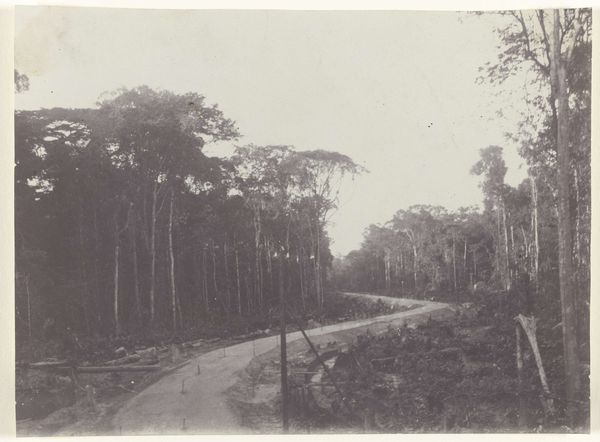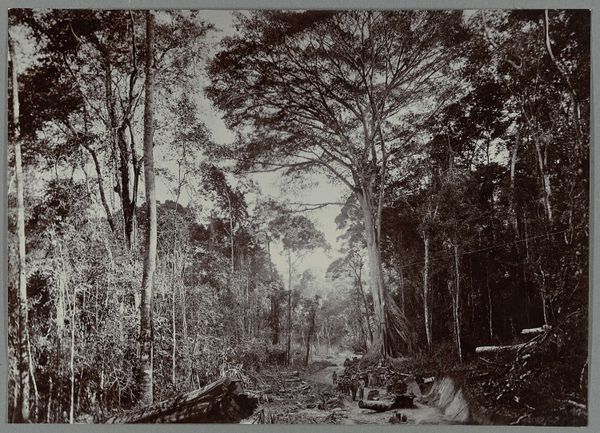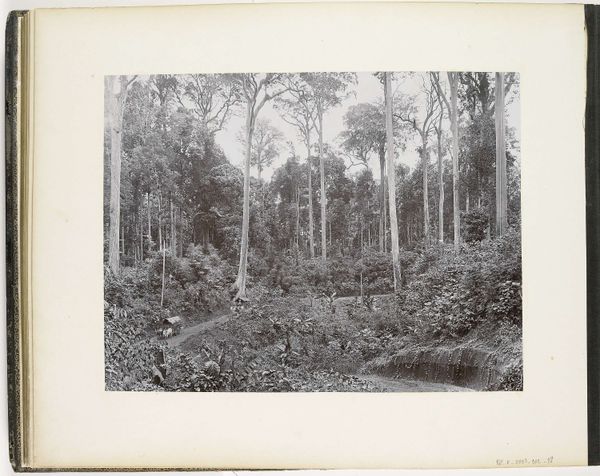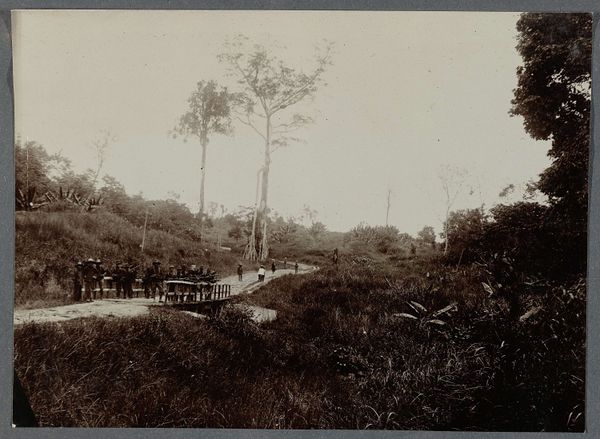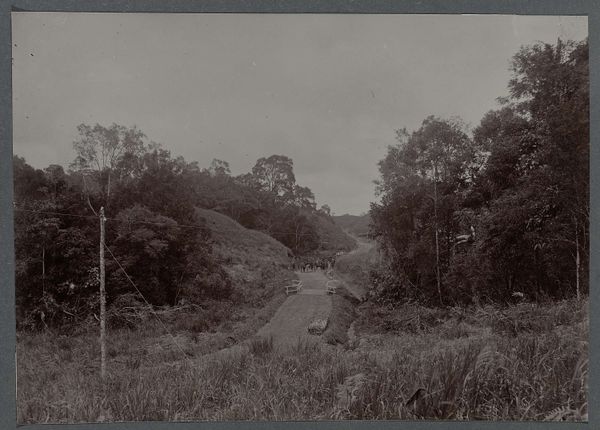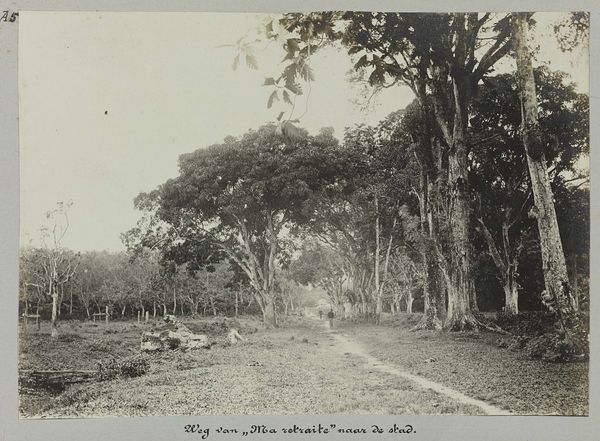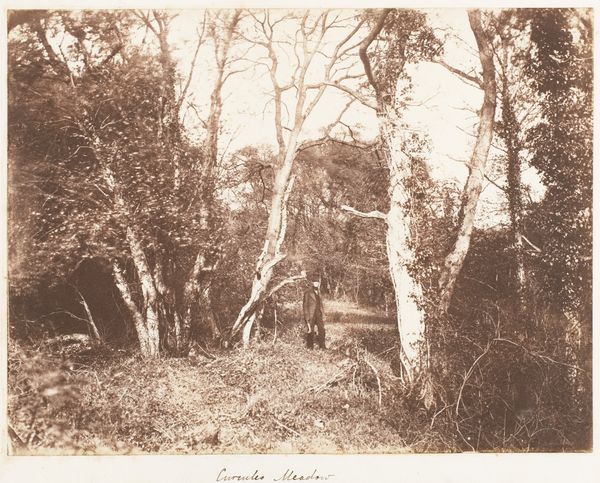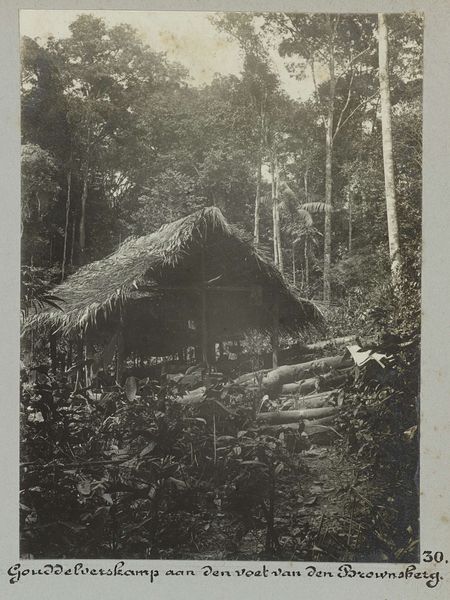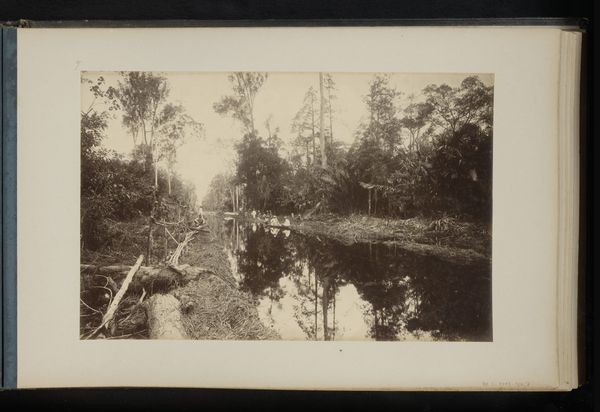
photography, gelatin-silver-print
#
landscape
#
photography
#
orientalism
#
gelatin-silver-print
#
realism
Dimensions: height 113 mm, width 171 mm
Copyright: Rijks Museum: Open Domain
Curator: This gelatin-silver print, titled "Kamp Lemmetje," was taken sometime between 1905 and 1910 by Jacob Evert Wesenhagen. It's currently housed in the Rijksmuseum. Editor: It's a rather unsettling image. The darkness of the forest presses in on the small settlement. There's something very isolating about it. Curator: Indeed. Wesenhagen’s photography often captured scenes of daily life within colonial contexts. This one gives us a glimpse into the labor camps that fueled the Dutch East Indies economy. The rough-hewn construction and minimal aesthetic reveal much about the harsh working and living conditions imposed upon laborers. Editor: The scale here is striking too. Notice how small the buildings are in relation to the seemingly infinite height of the surrounding forest. It visually reinforces the power dynamic—nature, and by extension the colonizer exploiting that nature, versus the vulnerability of those living and working within it. Was the production of these gelatin-silver prints tightly controlled or mass-produced for a broad public? Curator: Initially, such photography would be intended for official records, or perhaps for private collections circulated among those directly involved in colonial administration. Over time, as photography became more accessible, these images also served to promote a certain romanticized, albeit distorted, view of colonial life back in the Netherlands. We must, however, consider how it also omits the forced labor and systemic violence that were intrinsic to that setting. Editor: So it's less a neutral document and more of a constructed narrative then. Looking at the tonal range of this print specifically, how do you think Wesenhagen manipulated the silver gelatin process to either reinforce the documentarian aesthetic or perhaps create a subjective experience? Curator: I would suspect the intent wasn't necessarily aesthetic, but one tied to production. Using the gelatin-silver process offered consistent and relatively inexpensive print production for widespread use. However, there is artistry in how Wesenhagen chooses his vantage point and composition. He gives us just enough visual information to comprehend the scene but withholds a clear or uplifting narrative, allowing us to interpret the weight of colonial power on the landscape. Editor: It's an image that definitely stays with you. A stark reminder of how aesthetics and materials were deeply interwoven with broader social and political realities. Curator: Absolutely. Reflecting on the history of such imagery provides a necessary counterbalance to sanitized, idealized colonial narratives and reminds us to carefully analyze the stories photographs tell and, more importantly, what they leave out.
Comments
No comments
Be the first to comment and join the conversation on the ultimate creative platform.
